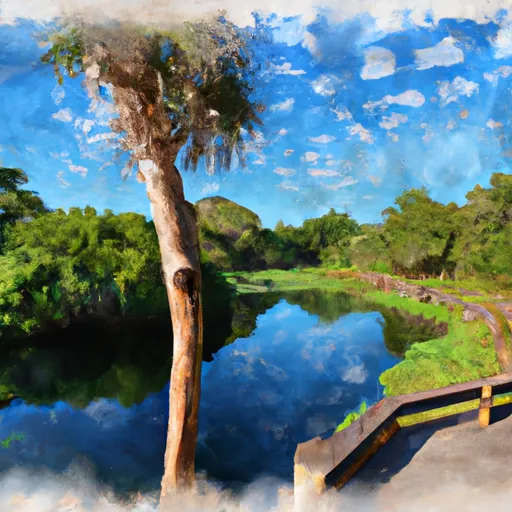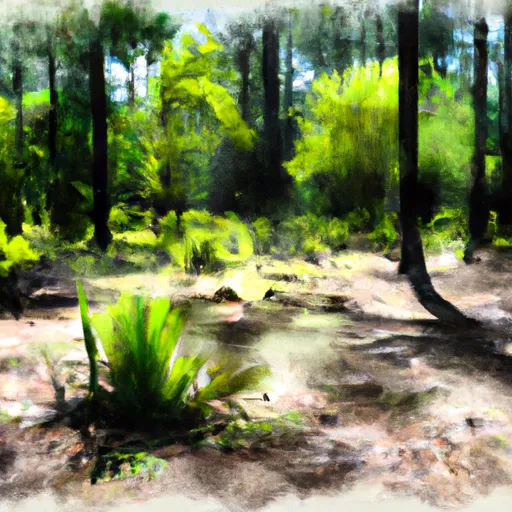Waccasassa Bay Preserve State Park
Rate this placeLast Updated: December 27, 2025
Waccasassa Bay Preserve State Park is a beautiful natural area located in the state of Florida.
°F
°F
mph
Wind
%
Humidity
Summary
It offers visitors a unique opportunity to explore and appreciate the state's diverse ecosystems.
One of the primary reasons to visit Waccasassa Bay Preserve is its untouched and pristine environment. The preserve is composed of 31,000 acres of land and water, making it one of the largest undeveloped tracts along Florida's Gulf Coast. It is home to a wide variety of plant and animal species, including pine flatwoods, hardwood hammocks, tidal marshes, and pristine rivers.
The park offers visitors several points of interest to explore. One of the most popular activities is hiking, with numerous trails winding through the preserve. Visitors can enjoy the peacefulness of nature, observe wildlife, and encounter rare plants along the way. Canoeing and kayaking are also popular, as the park is intersected by the Waccasassa and Wekiva rivers, providing ample opportunities for paddling.
Additionally, Waccasassa Bay Preserve State Park is a great place for birdwatching. It serves as an important stopover for migratory birds, and over 200 species have been documented in the area. Visitors can spot herons, egrets, bald eagles, and other fascinating avian species. Fishing enthusiasts can also try their luck in the park's rivers, which are known for their abundance of mullet, bass, and bream.
Here are some interesting facts about the area: Waccasassa is a Native American word meaning "house of the green snake." The park was established in 1996 to protect the natural and cultural resources of the region. This includes the history of Native American settlements and early European settlers.
The best time of year to visit Waccasassa Bay Preserve State Park is during the cooler months, from October to April. The weather during this time is more comfortable, with lower humidity and temperatures. It is also the time when migratory birds are passing through the area, providing excellent birdwatching opportunities.
To ensure accuracy, it is always recommended to verify information across multiple independent sources, such as the official website of the Florida State Parks, local tourism websites, or guidebooks on Florida's natural areas.
Weather Forecast
Park & Land Designation Reference
Large protected natural areas managed by the federal government to preserve significant landscapes, ecosystems, and cultural resources; recreation is allowed but conservation is the priority.
State Park
Public natural or recreational areas managed by a state government, typically smaller than national parks and focused on regional natural features, recreation, and education.
Local Park
Community-level parks managed by cities or counties, emphasizing recreation, playgrounds, sports, and green space close to populated areas.
Wilderness Area
The highest level of land protection in the U.S.; designated areas where nature is left essentially untouched, with no roads, structures, or motorized access permitted.
National Recreation Area
Areas set aside primarily for outdoor recreation (boating, hiking, fishing), often around reservoirs, rivers, or scenic landscapes; may allow more development.
National Conservation Area (BLM)
BLM-managed areas with special ecological, cultural, or scientific value; more protection than typical BLM land but less strict than Wilderness Areas.
State Forest
State-managed forests focused on habitat, watershed, recreation, and sustainable timber harvest.
National Forest
Federally managed lands focused on multiple use—recreation, wildlife habitat, watershed protection, and resource extraction (like timber)—unlike the stricter protections of national parks.
Wilderness
A protected area set aside to conserve specific resources—such as wildlife, habitats, or scientific features—with regulations varying widely depending on the managing agency and purpose.
Bureau of Land Management (BLM) Land
Vast federal lands managed for mixed use—recreation, grazing, mining, conservation—with fewer restrictions than national parks or forests.
Related References

 Gulf Hammock Wildlife Management Area
Gulf Hammock Wildlife Management Area
 Crystal River Archaeological State Park
Crystal River Archaeological State Park
 Goethe State Forest
Goethe State Forest
 Goethe Wildlife Management Area
Goethe Wildlife Management Area